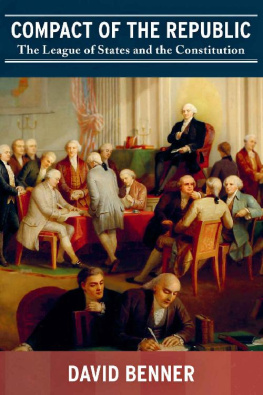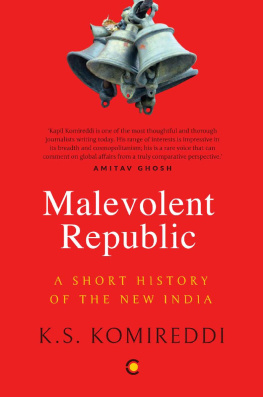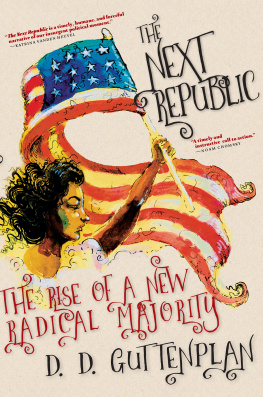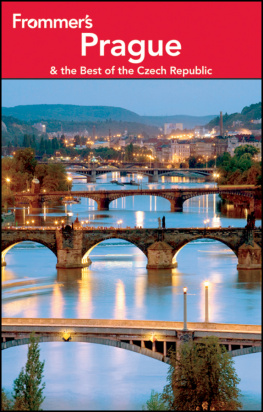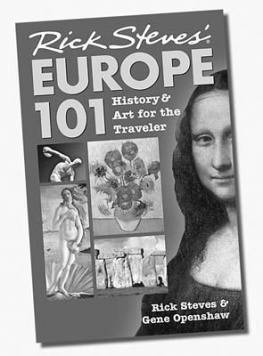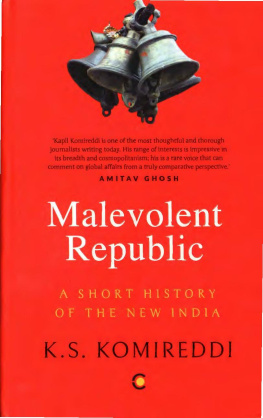MALEVOLENT REPUBLIC
K.S. KOMIREDDI
Malevolent Republic
A Short History of the New India

HURST & COMPANY, LONDON
First published in the United Kingdom in 2019 by
C. Hurst & Co. (Publishers) Ltd.,
41 Great Russell Street, London, WC1B 3PL
Kapil S. Komireddi, 2019
All rights reserved.
The right of K.S. Komireddi to be identified as the author of this publication is asserted by him in accordance with the Copyright, Designs and Patents Act, 1988.
A Cataloguing-in-Publication data record for this book is available from the British Library.
EISBN: 9781787382947
www.hurstpublishers.com
It would be a boon to democracy if one of the great nations of the world proves that it is possible to provide a good living for everyone without surrendering to a dictatorship of either the right or left India is a tremendous force for peace and non-violence, at home and abroad. It is a land where the idealist and the intellectual are yet respected. We should want to help India preserve her soul and thus help to save our own.
Dr Martin Luther King, Jr., 1959
CONTENTS
To my mother
The Publisher acknowledges with thanks the kind permission granted by Mendonca Chogle, Kalpana Chogle, and Elkana Ezekiel to republish poems by the late Nissim Ezekiel
We noticed nothing as we went,
A straggling crowd of little hope,
Ignoring what the thunder meant
Nissim Ezekiel
Saare jahaan se achhaa, Hindositaan hamaraa. Better than all the world is our India. My days began with those words when I was a child. I chanted them, in a school assembly of a hundred or so boys, facing the Indian flag, every morning for four months. The author of this unabashed ode to India, the great poet Iqbal, had not actually seen the world beyond the subcontinent when he published it at the beginning of the twentieth century; and, after a brief sojourn abroad, he recoiled from the songs pan-Indian timbre and reinvented himself as an exponent of ruinous ethno-religious nationalism, the spiritual father of the idea of religious segregation that culminated in the Partition of India and the birth of Pakistan. But we did not know this then. And so, at one of the first schools I attended, which was really a madrassa, an Islamic seminary, we recited every morning of the week, in the shade of the mosque that soared behind the flagpole, Iqbals verses exalting Indias specialness. We are Indian, we sang in chorus. India is our homeland.
The mosque, which lent grandeur to the school, looked so majestic that I thought the Taj Mahal must have been modelled on it. For a while, I thought it wasthe Taj. At noon, the boys, led by an elderly man with a soft beard and thick black glasses, went there to pray. The only non-Muslim pupil, I was left on my own. I was sitting alone in the classroom when a man walked in and asked me why I wasnt at prayer. He was tall and slender, with a pencil-thin moustache and black eyes lined with kohl. I had seen him before, always in a loose-fitting kurta standing at the back of the assembly, almost an adult. I wasnt allowed to, I said. O, youare that boy, he said excitedly, as though he had just confirmed some improbable rumour. He walked over and sat next to me. No one is prohibited from praying, he said. Ask your father to buy you a cap. Ill take you to the mosque. He then offered me his protection: If anyone gives you trouble, let me know. Ask for Murad.
He was beside himself with laughter when he saw me walking up to him a few days later with my cap on. What I was wearing was a Nehru topi, not the taqiyah, the Islamic prayer cap. My father, who had deposited me at this madrassa for a lofty reasonto inoculate me against sectarian temptations in later lifedid not know the difference, and had bought me a hat made popular by Indias notoriously ungodly founding Prime Minister.
But no matter. Any head covering would do, Murad said. We stood beneath the imposing dome that afternoon, and I, after rinsing my hands and feet, mimicked his motions, while repeating, under my breath, the only words I discerned in the call to prayer that radiated from the loudspeakers affixed to the mosques minarets:

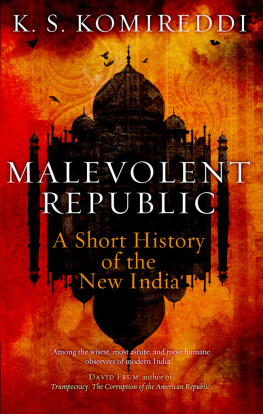

![Averroes on Platos Republic [trans. Ralph Lerner] (Cornell - Averroes on Plato’s Republic](/uploads/posts/book/324094/thumbs/averroes-on-plato-s-republic-trans-ralph.jpg)


